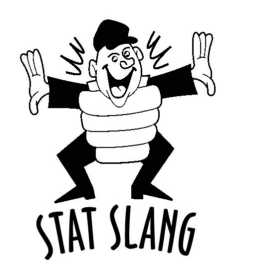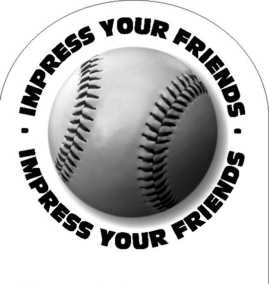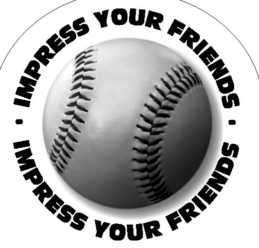The New Ballgame: Understanding Baseball Statistics for the Casual Fan (10 page)
Read The New Ballgame: Understanding Baseball Statistics for the Casual Fan Online
Authors: Glenn Guzzo

Clearly, this is a slugger's statistic, since a home run drives in all baserunners and the batter. But at least half of all homers come with nobody on
base. To find the consistent run-producers, look for a ratio of more than three
RBIs per home run.
Hits
Another prestigious milestone: collecting 200 hits for a season. Ichiro Suzuki
did this for a sixth straight season in 2006. Only Wee Willie Keeler (eight
seasons) and Wade Boggs (seven) have longer streaks.
It's a special season when a batter achieves 80 doubles, triples and home runs
in a season. When St. Louis' Albert Pujols became the National League's
Most Valuable Player in 2005, it was his third straight season with at least 80
extra-base hits. One hundred extra-base hits? Pujols reached 99 in 2004. Hank
Aaron, Mickey Mantle, Willie Mays and Ted Williams never got close. But
Colorado's Todd Helton has done it twice (in 2000 and 2001). Lou Gehrig did
it twice (in 1927 and 1930) and Gehrig topped 80 an amazing 10 times.
On-base percentage is overtaking batting average in significance, but it rarely
appears on scoreboards. Patience is a virtue: Players who walk often have the
highest on-base percentages. Look for players whose walks are at least 10%
of their total at-bats (average is 8-9%).
Stolen bases are thrilling plays. A speedy runner's presence on first base can
distract the pitcher, catcher and infielders enough to help the batter. And yet
in 2006 only 85 players (fewer than one in ten) stole at least 10 bases, while
202 hit at least 10 home runs. Most players do not steal any bases in a season.
They might be too slow, in the lineup for their slugging instead of their speed,
or it might be that they play for slugging teams in hitter-friendly ballparks,
where multi-run innings occur often enough to make the risk of an out on the
bases too costly.
Speed alone is not enough. Savvy and timeliness matter. Repeated studies have shown that, on average, stolen bases produce more runs only when
the baserunning thieves are successful more than two-thirds of the time. In
2006, the average success rate was 71%. So note how often a player is caught
stealing before judging his effectiveness.
A smart baserunner can steal 15, even 20 bases in a season on quickness and guile. But once you see that a player has stolen 25 or more bases,
you know that he is legitimately fast. Today, it takes about 60 stolen bases (in
some earlier eras considerably more, in some others considerably less) to lead
the league, but there are few contenders.

There are many slang terms for home runs, including the archaic
"long ball" and "round-tripper." The term "four-bagger" has survived
surprisingly long. Use the hipper "clinger" to create a more up-to-date
impression.
In conversation, Runs Batted In or RBI is sometimes shortened to
"ribbies."
If a player is hitting below .200, he might be said to be hitting "a buckninety" or "a buck-seventy-five," but the buck stops there. A player
hitting .200 or higher simply is hitting "two-fifty" or "three-twenty."
George Brett, the Hall of Fame third baseman who hit .305 over a
21-year career from the mid-1970s through the mid-1990s, coined
a phrase still popular: If you're hitting below .200, you're "below
the Mendoza line." That refers to wimpy-hitting shortstop Mario
Mendoza-career average .215. In the long list of Sunday statistics
published by newspapers, players are ranked in order of their batting
averages. In Brett's day, Mendoza's stats often were the last line
published.
Wins and Losses
Like batting average for hitters, wins is the shorthand to describe the value of
starting pitchers.
"He's a 20-game winner" says less about the player's actual statistics
than his status as an ace of the pitching staff. A 15-game winner is a guy you
want-good and reliable, but not a star. A ".500 pitcher"-a pitcher who loses
as many as he wins-is what you settle for when you can't find someone
better.
With 20 wins being a benchmark for a season, you can see why 300
career wins is a sure ticket to the Hall of Fame. That's the equivalent of fifteen
20-win seasons. Most of the pitchers in the Hall have not achieved 300 wins.
The pitchers who have reached 300 wins often have taken long routes.
Don Sutton won 324 games, more than most Hall of Fame pitchers, but
won 20 in a season only once. His career, mostly with the Los Angeles Dodgers, was unusually long-23 years.
Greg Maddux, still active in 2006, had won 333 games for the Chicago
Cubs, Atlanta Braves and Los Angeles Dodgers through the 2006 season but
had won 20 only twice-and never exceeded 20. However, he won at least 15
games in a record 17 straight seasons until that streak was broken in 2005.
Warren Spahn, who won more games (363) than any left-handed pitcher
in major league history, had one of the most remarkable careers for longevity.
He did not win his first game until he was 25 years old, but was still winning
them when he was 44. In the year he turned 35-time for many ballplayers to
retire-Spahn started a string of winning 20 or more games for six consecutive seasons.
The top individual award a pitcher can
win for a single season's work is called the Cy
Young Award, named for the pitcher with the
most wins in Major League history. Awarded
to one pitcher in both the American and National Leagues, the Cy Young Award often
(but not always) goes to the pitcher who won
the most games in his league. Denton True
Young, nicknamed "Cyclone" shortened to
"Cy," won 511 games. Time tends to erase all
of baseball's important records, but this one
has been unchallenged since 1911 and may
be the likeliest of all to remain intact.
In this statistic, lower is better. Although the serious fan will look beyond ERA
for more revealing information, for more than 100 years it has been the mosttrusted, stand-alone statistic to express how well a pitcher has done his job.
Standards vary by era, but the targets are these: an ERA below 3.00 for
starting pitchers; elite relievers often achieve ERAs below 2.00.
Pitchers with the most victories achieve the highest honors. But the pitchers with the dominant ERA and high strikeouts earn the deepest fan adoration.

Warren Spahn wore
the uniform number
21 for the Boston and
Milwaukee Braves. In
eight different seasons
he won exactly 21
games.
Ask statistics-minded fans about Hall of Fame pitcher Bob Gibson, and
hardly a one will be able to cite how many games he won. But they will speak
of his overpowering fastball, his then-record 17 strikeouts in a 1968 World
Series game, and his legendary 1.12 ERA that season.

It's popular knowledge among stat lovers that Bob Gibson's 1.12 ERA in
1968 was the best ever. Except that it's not. In "modern" baseball-the
period since 1901, when the American League debuted and new rules
went into force-two other pitchers have had better ERAs for a season.
Mordecai "Three Finger" Brown, a Hall of Fame pitcher, had a 1.04
ERA for the 1906 Chicago Cubs, winner of a record 116 games. Dutch
Leonard of the 1914 Boston Red Sox compiled the lowest ERA of all.
While statistical sources disagree on how low, it was 1.01, 1.00 or
perhaps even 0.96.
The Los Angeles Dodgers' Sandy Koufax excelled for only six seasons
and won many fewer games than most other pitchers who are in the Hall of
Fame, yet many fans say he was the best pitcher they ever saw, maybe the
best ever.
In those six seasons, Koufax became the only pitcher ever to lead his
league in ERA for five consecutive seasons, with such microscopic marks as
1.88, 1.74, 2.04 and 1.73 in his final four seasons. At a time when 200 strikeouts was an excellent season's work, Koufax easily topped that all six seasons,
leading the National League four times and three times topping 300-setting a record with an astonishing 382 in 1965. And he won, too, leading the NL in
wins with 25, 26 and 27 three of those years. Three times, in 1963, 1965 and
1966, Koufax won pitching's informal "Triple Crown"-leading his league
in wins, ERA and strikeouts in the same season.
Clearly, Koufax was the most dominant pitcher of this time (1962-66).
And he did it all with a badly arthritic elbow in his throwing arm. After totally
dominating in 1966, Koufax became one of the rare professional athletes to
retire while at the top of his game.
With each decade beginning in the 1940s, relief pitching has become more
specialized. Today, almost every team employs a "closer" whose primary
duty is to pitch the final inning when his team needs to preserve a narrow lead
(no more than three runs). If he succeeds, the relief pitcher earns a save-the
stat that has the most to say about how many millions of dollars per year that
pitcher will earn.
The save, the brainchild of Chicago baseball writer Jerome Holtzman,
didn't become an official statistic until 1969 and has been calculated differently at various times. Today, leading closers accumulate 40 saves or more.
The record is 57, by Bobby Thigpen of the Chicago White Sox in 1990.
You are probably familiar with this sort of
propaganda whenever there's a big spike in
the price of gas at the pump: "Over the last
five years, gas prices are stable relative to
inflation." Yeah? What about that 30% increase over the last seven months? And the
70% increase over the last three years? Look
closely and you find that each time the propaganda flows more freely than the gasoline,
the time frame keeps changing.
In recent years, baseball teams have accelerated the practice of promoting their players on ballpark scoreboards by picking out the
most favorable statistical trends. This could
be useful in a "who's-hot, who's-not" sort
of way, except that the team doesn't broadcast when its $12-million-a-year slugger is
1-for-24 and hasn't homered in three weeks.
Instead, we get an assortment of truths, halftruths, and nothing but deceptive truths.
Said slugger, whose .226 batting average is on the scoreboard, we're
told, "is hitting .290 over his last 45 games." Go back far enough, and you
can find a period of usefulness somewhere, all the while concealing that he
has hit all of five homers with 14 runs batted in over those 45 games-this
guy's killing the team.
